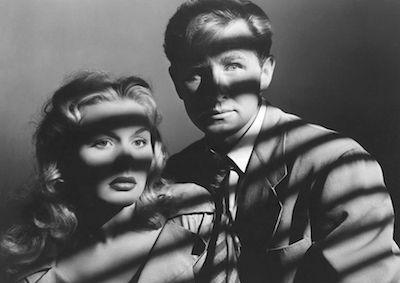Access every screening in the UCLA Festival of Preservation with a $50 pass.
Trapped (1949)
Preservation funding provided by the Film Noir Foundation.
Trapped starts deceptively like a dry, monotone 1950s educational film about the U.S. Department of Treasury and the Bureau of Printing and Engraving, but quickly and thankfully evolves into a well-paced noir melodrama focusing on the Secret Service’s pursuit of counterfeiting mobsters. Hot off his previous Eagle-Lion noir successes T-Men (1947) and He Walked By Night (1948), producer Bryan Foy employs many of the same pseudo-documentary crime procedural elements as scribed by Earl Felton—a frequent collaborator with director Richard Fleischer.
Although Fleischer’s long career careened through a wide assortment of genres with very mixed results, he particularly excelled in the crime and suspense genres in the late 1940s and early 1950s—Trapped, Armored Car Robbery (1950), and The Narrow Margin (1952) being his most solid entries. Variety was particularly effusive of Trapped, stating the film “packs in plenty of suspense and strong melodrama in this Secret Service yarn,” and “this is cops-and-robbers as the average spectator likes it dished up!” Despite the film’s perceived conventionality and obvious foregone conclusion, the New York Times stated “well-paced as melodrama, this film has momentum.”
Trapped is particularly notable as a breakout lead performance of 22-year-old Barbara Payton who was notorious for her brief and tempestuous Hollywood career as well as her tragic and highly publicized death at the age of 39. Cinematographer Guy Roe lovingly photographs Payton, and it is easy to see why producer Foy selected her to star opposite charismatic new leading man Lloyd Bridges. However, the film easily belongs to the debonair and succinct character actor John Hoyt as the film’s critical double agent. In a broader cinematic context, Roe expertly utilizes light and shadows to highlight the film’s atmospheric and claustrophobic spaces, while visually enhancing the film’s themes of subterfuge and entrapment. The cinematography is particularly effective in the film’s climax that takes place in a Downtown Los Angeles Red Car barn.—Todd Wiener
35mm, b/w, 78 min. Production: Bryan Foy Production. Distribution: United Artists. Director: Richard Fleischer. Producer: Bryan Foy. Story and Screenplay: Earl Felton and George Zuckerman. Cinematographer: Guy Roe. Music: Sol Kaplan. Cast: Lloyd Bridges, Barbara Payton, John Hoyt, James Todd, Russ Conway.
Restored by UCLA Film & Television Archive. Preserved from a 35mm acetate print. Laboratory services by Fotokem, Roundabout Entertainment, Audio Mechanics, Simon Daniel Sound, DJ Audio, Inc. Special thanks to Harvard Film Archive, Eric Spilker.






 Mobile Navigation
Mobile Navigation

